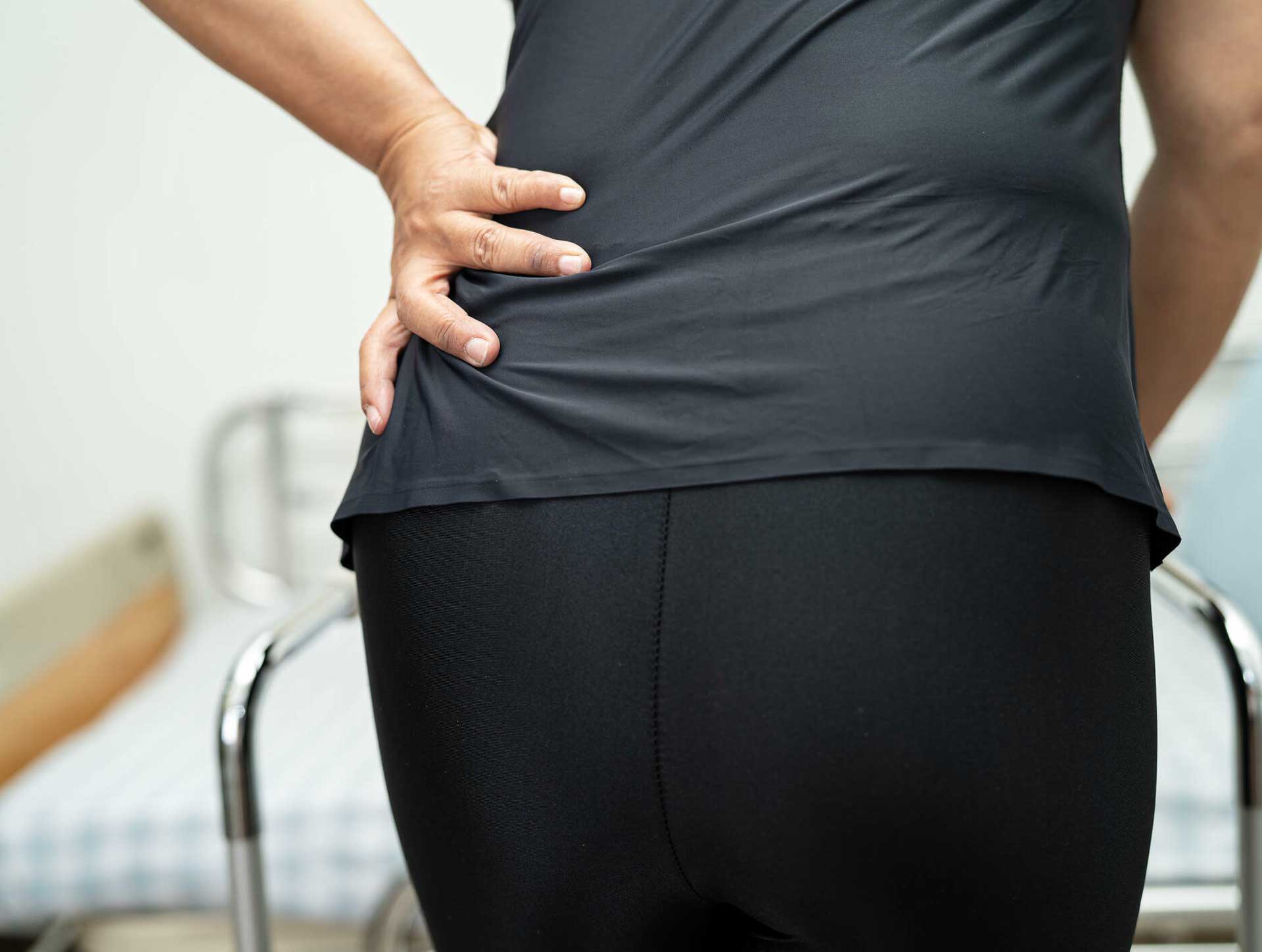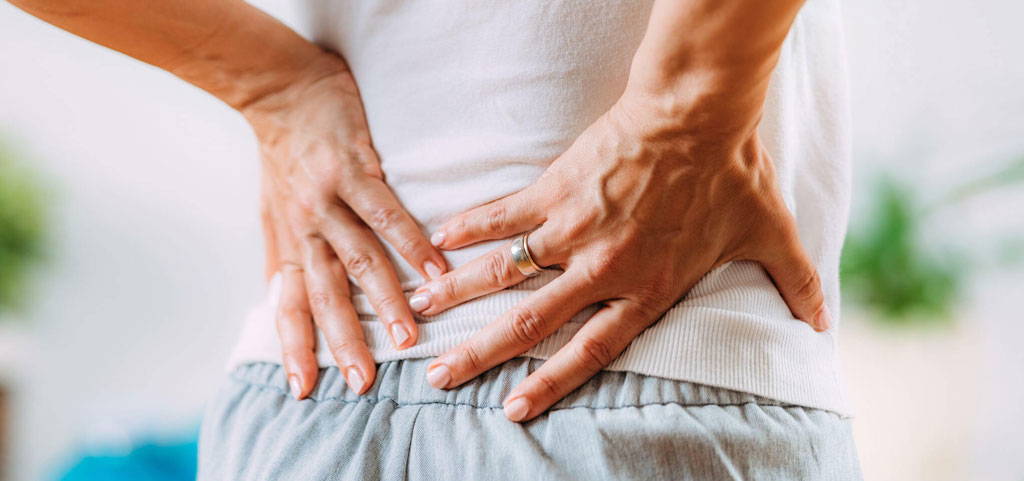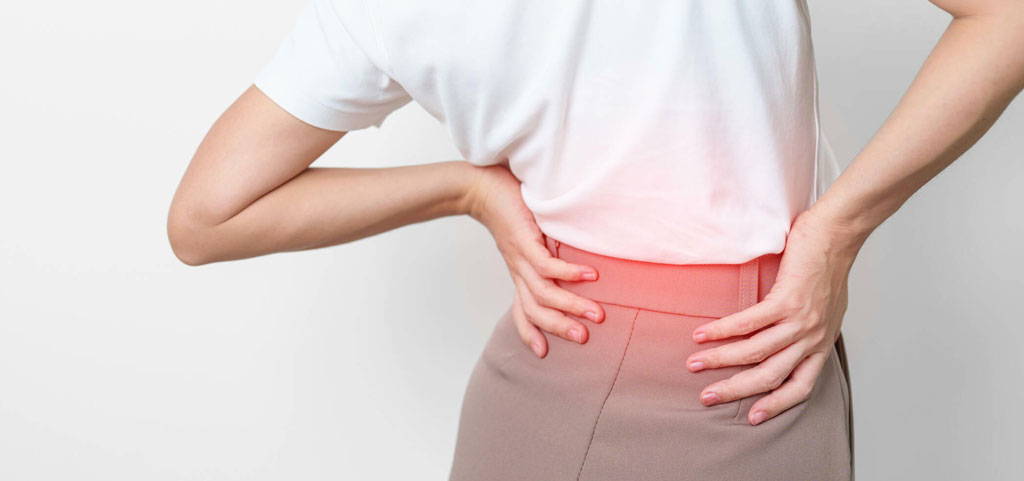
DECEMBER 22, 2023 | 3 Mins Read
TABLE OF CONTENTS

When you bend forward to pick something up, do you feel a strain in your lower lumbar spine? Depending on the type of pain, intensity, or the condition of the lumbar spine, there's a back brace tailored for you:
Made primarily from breathable fabric like neoprene or elastic, a flexible back brace focuses on offering basic support. A flexible brace is designed to provide support and compression for the lower back while allowing for a degree of mobility. These braces are typically made from elastic or neoprene materials and are designed to fit snugly around the lower back region.
Flexible braces work by applying compression to the tense muscles and soft tissues of the lower back, which can help improve circulation and reduce inflammation. The compression also helps stabilize the spine and prevent excessive movement or twisting, which can be beneficial for people with lower back pain or injuries.
Unlike rigid back braces, which are designed to limit motion and provide maximum support, flexible braces allow for a degree of flexibility and movement. This can be beneficial for people who have:
A rigid brace combines elements of hard plastic, metal bars, and sometimes even steel springs to offer additional support. While semi rigid braces are typically made of a combination of rigid and flexible materials, they both provide significant support for the lower back region.
Rigid back braces are typically recommended for people who have experienced severe back injuries or those with chronic conditions such as :
They are commonly prescribed for serious spinal conditions such as compression fractures or post-operative healing where movement restriction is necessary for proper healing.
Check out the Koprez® Back Support Brace for a great example of a rigid back brace. It features adjustable velcro straps, rigid panels, and breathable fabric for maximum lumbar support and comfort
Custom-molded braces are a specialized solution often prescribed for scoliosis and other severe spinal deformities, providing a level of support that is tailored to the individual's specific spinal curvature. These braces are crafted using advanced techniques that involve detailed measurements or 3D imaging of the wearer's spine, ensuring a precision fit that conforms exactly to the curve of the spine.
This customization allows for optimal support and alignment, which is critical in managing complex spinal conditions. The materials used in custom-molded braces are typically robust and durable, offering maximum support while still being designed for comfort.
Though more expensive than standard back braces, their effectiveness in managing severe spinal issues makes them a valuable tool in orthopedic and rehabilitative care. By precisely addressing the unique contours of each individual's spine, custom-molded braces play a crucial role in treatment plans, often leading to significant improvements in posture, pain reduction, and overall spinal health.
Soft braces, designed to address significant spine curvature issues, stand out for their tailored approach to improving posture and providing back support. These braces are typically made from flexible, yet supportive materials like foam or breathable fabrics, allowing them to conform closely to the individual's back. This adaptability is crucial in managing conditions such as mild scoliosis, kyphosis, or lordosis, where gentle, consistent support can help in realigning the spine gradually.
Soft braces offer a balance of support and comfort, making them ideal for extended wear throughout the day. They are particularly beneficial for people who need corrective support without sacrificing mobility, as they allow for a greater range of motion while still maintaining the spine in a more natural, aligned position. Thus, soft braces provide an effective, non-invasive solution for those seeking to correct postural issues stemming from spine curvature irregularities.
Beyond the common types of back braces, there exists a diverse range of specialized medical braces designed to address specific spinal conditions and provide targeted relief. Each of these braces is uniquely engineered to support different areas of the spine, catering to a variety of needs.
Lumbar Sacral Orthosis braces focus on stabilizing the lower spine and pelvic region. They are distinguished by their wide belt that encircles the lower torso, ensuring the spine is supported and remains aligned. This type of brace is particularly beneficial for individuals suffering from spinal deformities such as scoliosis or lordosis. By providing firm support to the lower back, LSO braces not only help in pain management but also aid in maintaining proper posture and preventing further complications related to these spinal conditions.
Also known as neck braces, cervical collars provide essential support for the neck and head, crucial for maintaining the cervical vertebrae in a neutral position. They are commonly employed in the treatment of neck injuries, including whiplash, where they help stabilize the neck and prevent further injury. By restricting movement and providing support, cervical collars aid in the healing process and offer relief from neck pain and discomfort, ensuring a safer and more controlled recovery.
Thoracic Lumbar Sacral Orthoses are another type of back support, uniquely designed to apply pressure through rigid metal rods or plates. Their primary function is to maintain the spine in a neutral position, a necessity for individuals with severe spinal deformities or those recovering from spinal surgery. By offering a high level of support, TLSOs play a pivotal role in stabilizing the spine, which is critical during the healing process. The use of these braces ensures that the spine is properly aligned and supported, minimizing the risk of complications and aiding in a smoother recovery.
Each of these braces offers a unique approach to spinal care, addressing different needs and conditions. Their specialized designs and targeted support make them indispensable tools in the management and treatment of various spinal issues.

The use of a back brace can be incredibly beneficial for a wide range of back-related issues, from chronic pain management to injury prevention. Here's a closer look at the specific advantages that wearing a back brace can offer:
Good posture is essential for spinal health, and a back brace can play a significant role in achieving this. By guiding the spine into proper alignment, a back brace helps counteract the negative effects of poor posture habits.
Chronic back pain can be debilitating, but a back brace offers a practical solution for managing this discomfort. By providing targeted support, back braces can significantly alleviate pain and improve daily functioning.
Individuals with specific spinal conditions or those recovering from back injuries can find particular benefit from using a back brace. It provides essential support that can aid in both treatment and recovery.
Preventing back injuries, especially in activities that strain the back, is another key advantage of wearing a back brace. It acts as a safeguard, particularly for those engaged in physically demanding tasks.
For those recovering from back injuries, a back brace is an invaluable tool. It not only supports the healing process but also minimizes the risk of re-injury, allowing for a safer and more effective recovery period.
Gaining back mobility can be challenging for individuals with back pain or injuries. A back brace offers a means to improve mobility, enabling them to engage more fully in daily activities and enjoy a better quality of life.
In a world where invasive treatments and medications are commonplace, the back brace stands out as a non-invasive, low-risk option for managing back pain and related issues.
When it comes to managing back pain and preventing further injury, choosing the right back brace is essential. There are many types of braces available that can provide varying levels of support depending on your individual needs.
Here are some tips to help you understand your options and make an informed decision when selecting a back brace.
Using and maintaining a back brace correctly is crucial for maximizing its benefits and extending its lifespan. This section provides detailed guidance on how to wear, adjust, clean, and maintain back braces for optimal support and comfort.
By following these guidelines, you can ensure that your back brace provides the best possible support, remains in good condition, and integrates seamlessly into your daily life. Remember, a back brace is a tool to aid in your comfort and recovery, and should be used as part of a broader approach to back health.
Before purchasing, it’s essential to consult with a medical professional or a physical therapist. They can guide you on how to wear the brace properly and which one might be the best fit, especially if you require it for specific conditions like degenerative disc disease or spinal stenosis. Always ensure that the brace fits snugly, offers the support you need, and is made of breathable fabric for comfort.
Author

Claire Evans worked as the content marketing manager at Koprez. Claire combined a background of writing and editing, marketing, and patient education to best serve consumers, fitness enthusiasts, athletes, and anyone who relies on the Koprez brand for helpful information.
Koprez® Featured Products